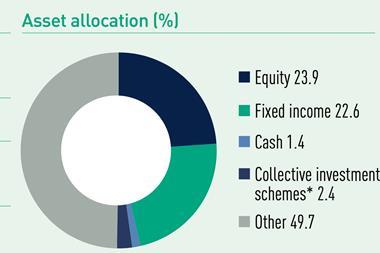Denmark’s statutory pensions manager ATP today revealed a loss on its return-seeking investment portfolio for the third quarter, wiping out the portfolio’s narrow first-half gain, but its leader sought to shift the focus towards a different measure of success.
ATP, which runs the supplementary labour-market pension scheme of the same name, reported its investment portfolio – which consists of its bonus potential and sits alongside the much larger guarantee-backing hedging portfolio – sustained a 3.6% loss between July and September, driven by falling values of government and mortgage credit bonds.
For the first half of 2023, ATP had posted a 0.9% gain on the investment portfolio.
The scheme’s total assets dwindled to DKK644.7bn (€86.3bn) by the end of the third quarter from DKK683.7bn on 30 June, according to today’s report, with the bonus potential having shrunk to DKK100.4bn and total pension liabilities having increased to DKK510.9bn since the end of June.
Financially, ATP’s size is now a far cry from the peak of nearly a trillion kroner at the end of 2020 – a consequence mainly of rising interest rates eroding the face value of the fixed income instruments it largely comprises.
The fund received much criticism after huge losses on its leveraged investment portfolio in 2022, including calls for further review of its recently-revamped business model.
In its report today, the Danish pension fund said: “ATP’s 5.6 million members’ pension guarantees are intact. The relationship between the guaranteed pensions and the interest hedging means that ATP continues to have the funds to pay what we have promised.”
“The bonus capacity is stable after a period where rising interest rates in particular posed a challenge to the investment portfolio,” it said.
For 40% of Danish pensioners, the ATP pension was their only pension apart from the state pension, it said.
Martin Præstegaard, ATP’s chief executive officer, insisted ATP’s finances were healthy.
“The bonus capacity, which represents the ratio between the value of ATP’s bonus potential and ATP’s total liabilities towards its members, increased in 2023 to 18.4%,” he noted, adding: “The bonus capacity provides a good representation of ATP’s financial health.”
“It is the bonus capacity – and not the size of ATP’s statement of financial position – which is the most important factor in our decision making. And this is what ultimately allows us to increase the pensions,” Præstegaard said.
Read the digital edition of IPE’s latest magazine






































No comments yet